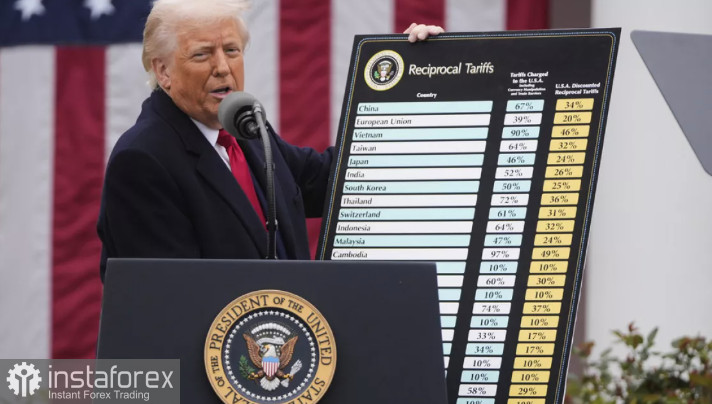The British pound fell in response to the news that the U.S. and the U.K. had signed a trade agreement. However, there are many nuances that need to be clarified.
Yesterday, President Donald Trump called the trade agreement with the U.K. a historic achievement and the first step in his revolutionary efforts to reform the global economy. However, as the president began revealing the deal's details, it became clear that it did not match his promised full and comprehensive free trade agreement between the U.S. and the U.K.

Trump had hoped the deal would revive confidence in his economic agenda—which, to some extent, it did, as both the dollar and U.S. stock indexes reacted positively. Still, the question remains: how long will that reaction last?
The agreement grants the U.S. expanded market access and faster customs procedures for exports to the U.K., while the U.K. receives limited tariff relief on cars, steel, and aluminum. However, many important details remain undisclosed.
"In terms of markets and those concerned about the U.S. economy, this is minor," said Tim Meyer, professor of international trade law at Duke University School of Law. "There's really not much to see here. Clearly, this is a framework document, not a full-fledged agreement."
At a press conference, Trump brushed off questions about whether he had overstated the deal's significance, calling it "a great deal for both sides" instead. "Every country wants to make deals," he added. Clearly, facing declining poll numbers and eroding confidence in his presidency, Trump sought to present a victory, as his tariff policies have destabilized global markets and increased the risk of a U.S. recession. He has repeatedly claimed that the short-term pain of his efforts is worth it, as they will bring more investment to the U.S. But recently, the president has made several concessions in an attempt to calm investor anxiety, making the deal with the U.K. appear more like a rushed attempt to show progress than the realization of a long-standing objective.
Trump described the trade framework with the U.K. as a "breakthrough" that would remove barriers and expand market access for U.S. goods—remarks that investors greeted positively. However, the deal only addressed a few of the major concerns of American companies in the U.S.-U.K. trade relationship.
The U.K. will retain its digital services tax, which impacts major U.S. tech firms, offering only a vague commitment to working toward a future digital trade agreement. Both sides also left unresolved the issue of Trump's proposed comprehensive pharmaceutical tariffs. And although the U.K. lifted tariffs on some U.S. agricultural products, its strict food standards remain intact.
In the end, the U.S. and U.K. issued conflicting information on key elements of the deal. The British government claimed that U.S. tariffs on British steel and aluminum would be eliminated, while the White House released its own statement saying they would "negotiate an alternative arrangement" on metal tariffs and that the framework establishes a "new trade partnership" in materials.
As previously mentioned, the dollar rose in response to this news, while risk assets saw a significant sell-off.
GBP/USD Technical Outlook
Pound buyers need to reclaim the nearest resistance at 1.3250. Only then can the pair aim for 1.3285, which is likely to be a tough level to break. The most ambitious target is the 1.3310 level. If the pair declines, bears will try to take control at 1.3212. A successful breakdown of this range would seriously damage bullish positions and push GBP/USD down to the 1.3170 low, with a possible extension to 1.3125.
EUR/USD Technical Outlook
EUR/USD buyers need to focus on reclaiming the 1.1260 level. Only this will allow for a test of 1.1310. From there, the pair could reach 1.1370, but doing so without strong support from institutional investors will be quite difficult. The ultimate goal remains the 1.1400 high. If the pair drops, serious buyer interest is only expected around 1.1205. If that support fails, a retest of the 1.1150 low is likely, or long positions may be opened from 1.1097.





















